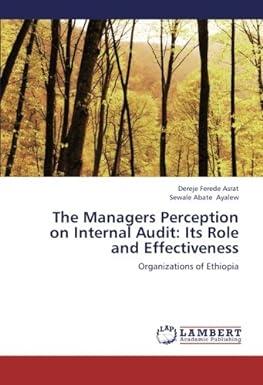Question
Mr. Tom is a risk averse investor. Before the COVID19 pandemic (i.e., pre-COVID19 period) his risk aversion coefficient was 2 and his optimal investments in
Mr. Tom is a risk averse investor. Before the COVID19 pandemic (i.e., pre-COVID19 period) his risk aversion coefficient was 2 and his optimal investments in a risky portfolio and risk-free asset were AU$60,000 and AU$ 40,000 respectively. Standard deviation of his complete portfolio was 21% and risk-free rate was 5%.
During the COVID19 pandemic Mr. Tom becomes more risk averse and his risk-aversion coefficient increases to 4. Risk-free rate drops to 3% and return on risky portfolio increases by 2% (i.e., if the pre-COVID19 period return on risky portfolio is X%, return on risky portfolio during the COVID19 crisis becomes X% + 2%) and standard deviation of risky portfolio falls to 30%.
Based on this data, compute the optimal investment proportion during the COVID19 crisis period in risky portfolio.
Step by Step Solution
There are 3 Steps involved in it
Step: 1

Get Instant Access to Expert-Tailored Solutions
See step-by-step solutions with expert insights and AI powered tools for academic success
Step: 2

Step: 3

Ace Your Homework with AI
Get the answers you need in no time with our AI-driven, step-by-step assistance
Get Started


